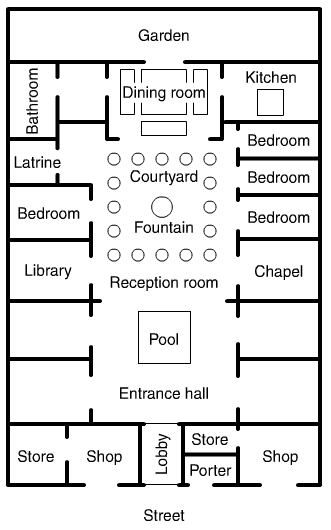

 |
|
 |
Houses
Wealthy Romans could afford to have a house in the country (a villa) and a house in the town (a domus). Town houses could be very large, and were mostly of a similar design. The front door opened onto a hall with an open roof and a pool in the middle. It would usually contain a garden and fountain too. There would be up to 30 rooms around the edge of the courtyard including a kitchen, dining room, bathroom and bedrooms. Some houses even had a library, a chapel and servants' rooms.
The rooms were uncluttered and stylish with high ceilings, wide doorways and brightly painted walls. Very rich people would even have mosaics on the floors! The houses were built of stone, had red clay roof tiles and were even heated. A central furnace would produce hot air that would flow through channels under the floors. Many houses would also have their own water supply, with deep wells dug into the ground.
Only the rich Romans could afford to live in town houses like these. Many other people lived in tall, crowded blocks of flats. The ground floor would usually contain a row of shops, while many people would be packed into the flats above. Roman blocks of flats were often built out of wood and lit with gas lamps, making them a real fire hazard.
Below is a plan of a domus, a typical Roman town house.
